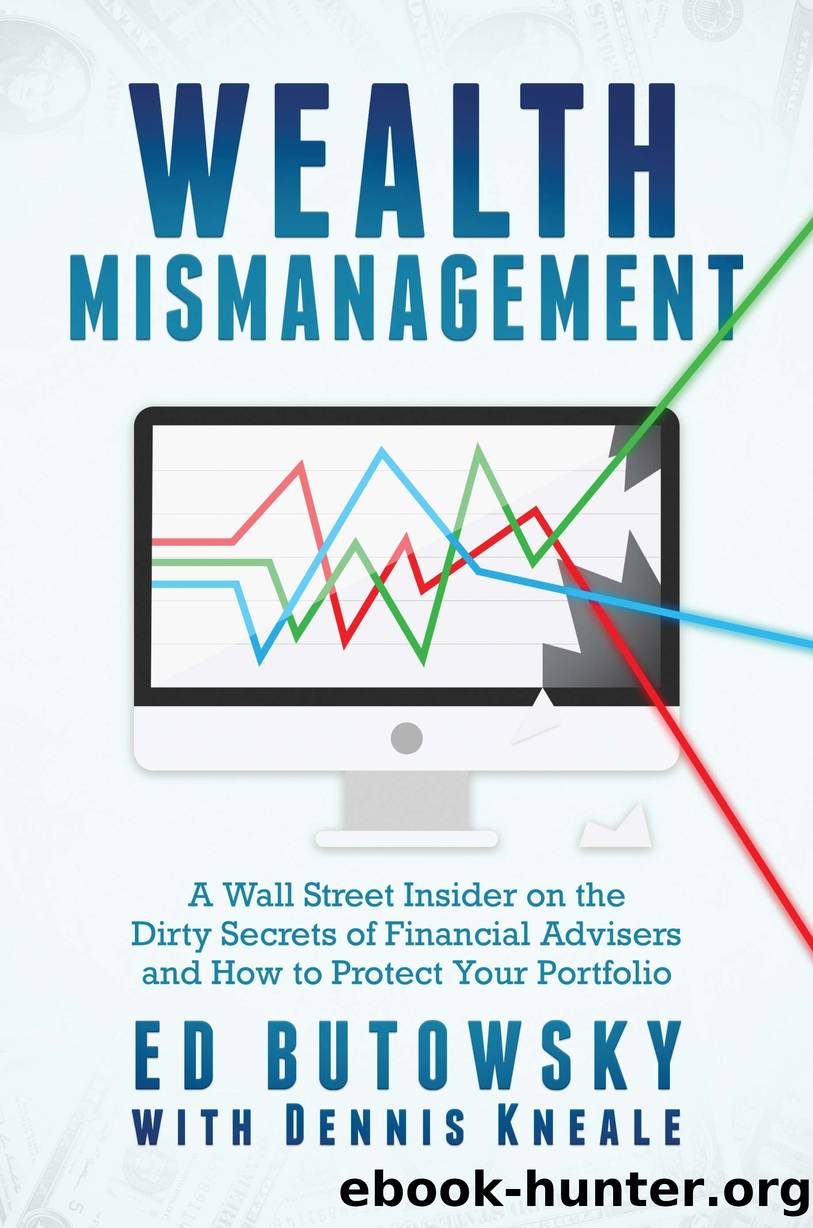Wealth Mismanagement by Ed Butowsky

Author:Ed Butowsky
Language: eng
Format: epub
Tags: N/A
Publisher: Post Hill Press
Published: 2019-06-10T00:00:00+00:00
CHAPTER 7
Portfolio Construction
Someday, if you are lucky, your investments might fare so well that you have the extra scratch to afford a second home. Feeling flush, you buy a site in a seaside town and decide to design and build from the ground up. You hire a construction contractor to design this dream home and turn the blueprints into reality. He dives in, hires a crew, and finishes in record time. It looks beautiful on the outside, although on the inside your new house seems a little wobbly, maybe, now and then.
Only later do you learn that the contractor you hired never had any training in how to design a sturdy, up-to-code house, never learned how to set up the structural ridge beam to support the roof or how to pour the concrete foundation properly. As for the electrical, plumbing, and insulation his crew installed, fuhgeddaboudit.
You can see where Iâm going here: most financial advisers are woefully inept at portfolio construction, and even big-name Wall Street firms donât train their brokers in how to do it. The investment portfolios erected by most Wall Street wealth advisers are wobbly houses designed by well-meaning guys whose main education is in how to sell investments rather than put together a safe and sound portfolio.
At one point a few years ago, I reviewed the model portfolios of the biggest names on Wall StreetâJ. P. Morgan Chase, Morgan Stanley, Merrill Lynch, Goldman Sachs, UBS, Fidelity Investmentsâand found that all of them carried more risk than what the firmsâ advisers were telling their clients. This inability to quantify and evaluate risk is part of the problem with bad portfolio design.
The biggest weakness in most portfolios is the lack of a special class known as non-correlated assets, investments that zig when the rest of the market zags. These contrarian instruments rise when the mainstream markets fall and head downward when the rest of the markets head upward. They are non-correlated to the movements of the broader markets, especially stocks, and the best investment advisory firms (yes, the term is relative) should constantly be hunting for non-correlated assets.
An asset that closely tracks the stock marketâs ups and downs 100 percent of the time has a correlation to stocks of 1.0; an uncorrelated asset is at 0.0 because it bears no similarity at all to stocksâ patterns, and a non-correlated investment moves in the opposite direction of stocks.
It is an all but irrefutable truth that 97.5 percent of portfolios are fundamentally flawed and more vulnerable to higher risk and bigger losses because they lack non-correlated assets. They comprise solely publicly traded securities, and in these highly wired times of instant global communication of information, most publicly traded securities resemble each other in their price movements. They are highly correlated to one another.
Adding alternative assets is the best way to reduce risk and volatility in your account, because they can hold steady, or even rise, when your major holdings are tumbling downward. Many financial advisers, however, wrongly view adding alternatives as something to avoid because it may increase the risk of losses.
Download
This site does not store any files on its server. We only index and link to content provided by other sites. Please contact the content providers to delete copyright contents if any and email us, we'll remove relevant links or contents immediately.
| Analysis & Strategy | Bonds |
| Commodities | Derivatives |
| Futures | Introduction |
| Mutual Funds | Online Trading |
| Options | Portfolio Management |
| Real Estate | Stocks |
Rich Dad Poor Dad by Robert T. Kiyosaki(6399)
Pioneering Portfolio Management by David F. Swensen(6226)
How To Win Friends and Influence People by Dale Carnegie(4441)
The Money Culture by Michael Lewis(4074)
The Dhandho Investor by Mohnish Pabrai(3698)
The Wisdom of Finance by Mihir Desai(3650)
Liar's Poker by Michael Lewis(3367)
Fooled by Randomness: The Hidden Role of Chance in Life and in the Markets by Nassim Nicholas Taleb(3043)
The ONE Thing by Gary Keller(3007)
The Intelligent Investor by Benjamin Graham Jason Zweig(2995)
Mastering Bitcoin: Programming the Open Blockchain by Andreas M. Antonopoulos(2980)
How to Day Trade for a Living: Tools, Tactics, Money Management, Discipline and Trading Psychology by Andrew Aziz(2909)
Rich Dad Poor Dad: What The Rich Teach Their Kids About Money - That The Poor And Middle Class Do Not! by Robert T. Kiyosaki(2907)
Investing For Dummies by Eric Tyson(2893)
How to Win Friends and Influence People by Dale Carnegie(2860)
Market Wizards by Jack D. Schwager(2643)
Zero Hour by Harry S. Dent Jr. & Andrew Pancholi(2614)
How to Pay Zero Taxes, 2018 by Jeff A. Schnepper(2591)
The Psychology of Money by Morgan Housel(2591)
